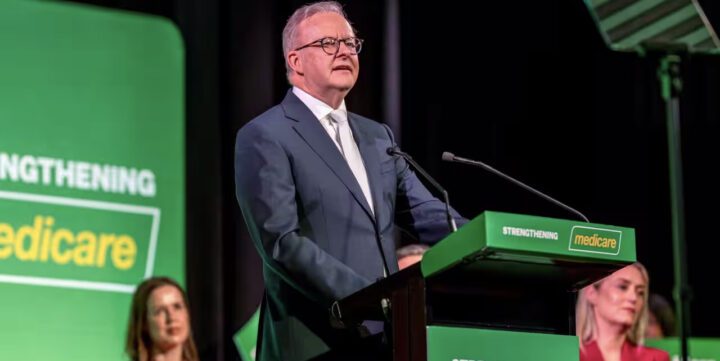Will an $8.5 Billion Medicare Investment Make a Ripple?
March 26, 2025
Bulk-billing Priority Confirmed
Prime Minister Anthony Albanese recently announced an AUD $8.5 billion investment in Medicare, which his Government describes as the largest boost in the program’s history. The plan extends bulk-billing incentives to all patients, rather than just concession cardholders or children, and introduces a 12.5% loading for practices that fully bulk bill. The main goal, from the government’s point of view, is to raise the proportion of free GP visits to nine out of ten by 2030.
Shortly after the announcement, Opposition Leader Peter Dutton promised to match the $8.5 billion in funding. Although some policy details differ between the two major parties, both sides agree that out-of-pocket costs have grown significantly in recent years, discouraging or limiting many patients from seeing a doctor when they need to. The centerpiece of Labor’s approach is an enhanced Bulk Billing Practice Incentive Program, scheduled to begin this November if the current Government is returned at the polls. It builds on a 2023 change that tripled bulk-billing incentives for concession cardholders in metropolitan areas, raising them from around $7 to $21.
Under the latest proposal, any GP who bulk bills a patient will receive both the standard Medicare rebate and an extra incentive payment, bringing the total remuneration for a standard (Level B) consultation in metropolitan areas to about $63.50—up 62% from $42.85. Practices that opt to bulk bill every patient would also receive an additional quarterly loading of 12.5%, which could increase the amount to roughly $69.56 per standard consultation, overall. GPs in regional and remote areas would receive correspondingly higher amounts to reflect the complexities and costs of providing care in those settings, noting the Level B consultation rises to $86.91 (up 103%).
Three Decades of Withheld Indexation
It’s worth acknowledging the context of the problem at large, and how, as a nation, we have found ourselves in this complex and disheartening position. Over the past few decades, government indexation of Medicare rebates has never kept pace with the true costs of providing medical services, effectively resulting in a significant shift in expenses from the Commonwealth to healthcare providers and patients. Although a wage- and CPI-based formula exists for raising MBS fees, indexation has historically lagged behind inflation and average weekly earnings.
Over almost three decades, MBS rebates have increased at an annual average of only 1.1 per cent, well below the 2.4 per cent and 3.5 per cent rates of CPI and average weekly earnings, respectively. The result is a growing mismatch between Medicare’s fixed rebates and the rising cost of wages, rent, equipment, insurance, and technology – costs that practitioners must either absorb or pass on to patients through higher out-of-pocket fees. An analysis of Level B consultation indexation reveals that this shortfall has saved the government around $8.6 billion in today’s dollars since 1993, leaving general practices and patients to bear the brunt of inadequate funding and forcing many clinics to reduce bulk billing, shorten consultation times, or risk their own financial viability.
These decades of inadequate indexation have also contributed to a worrying decline in the number of doctors choosing general practice. As rebates fail to keep up with real-world expenses, many GPs face tightening budgets, longer working hours, and limited resources to maintain service quality. This cost-pressure environment makes general practice a less attractive career path for newly qualified doctors, who are more inclined to pursue specialties that offer better remuneration and conditions. By shifting more of the financial burden onto providers and patients, the Government’s slow rate of indexation has inadvertently exacerbated existing GP shortages, especially in areas already underserved, and has reduced the overall sustainability of primary care.
Short-term Gains Needed Despite Long-term Uncertainty
Despite the notable increase, each practice retains control over whether to offer bulk billing. Some may still find that even these higher incentive payments do not fully cover overheads. According to Australian Medical Association (AMA) President Dr Danielle McMullen, the gap fees in many urban clinics now exceed $40, and the additional funding may not close that gap for some providers. As a result, doctors who are struggling with high rents and staffing costs may continue to charge out-of-pocket fees, at least for certain services.
The Royal Australian College of General Practitioners (RACGP) holds a similarly measured view. Its President, Dr Michael Wright, commends the policy’s plan to boost GP training, which proposes raising GP training spots to 2000 each year by 2028, alongside salary incentives that encourage junior doctors to enter general practice. He believes such initiatives are critical in alleviating the national shortage of GPs, particularly in regions with limited access to primary healthcare. Yet Dr Wright also highlights the concern that while short consultations (Level B) will see a significant rebate hike, the proportional increase for extended consultations, which often apply to chronic disease management or complex mental health care, remains comparatively small. In his view, a funding structure that favours brief appointments could make it more difficult for GPs to dedicate adequate time to patients with multifaceted needs.
Experts like the Grattan Institute’s Peter Breadon argue that raising bulk-billing incentives alone may not solve broader access problems. In areas often labelled as “GP deserts,” the question is not only the cost of a consultation but also whether enough practices operate locally. Labor’s new policy does include a $600 million workforce package, featuring paid parental leave and study leave for GP trainees, along with additional primary care rotations for junior doctors. These measures could channel more providers into underserved communities if they are coupled with localised incentives for relocation and practice establishment.
Recent data from the Australian Bureau of Statistics underlines the scope of the challenge, showing that 8.8% of Australians delayed or skipped a GP visit in 2023–24 because of cost. This figure is up from 3.5% two years earlier. Prime Minister Albanese argues that no patient should have to consult their bank account before booking a doctor’s appointment, insisting that the $8.5 billion plan will expand bulk billing and deliver an extra 18 million fully subsidised GP consults per year.
Dr Wright and Dr McMullen emphasise that clinics are under no obligation to bulk bill every patient, even with the enhanced incentive. GPs might continue charging fees if higher operating costs mean that the combined rebate and incentive do not cover expenses. Some also worry that a fee structure offering a larger relative increase for short appointments could inadvertently discourage doctors from offering the longer consultations essential for patients with complex or chronic issues. Although the Government has pledged to raise rebates for extended consultations, these increases remain modest relative to those for shorter visits.
Since both Labor and the Coalition have committed to expanding Medicare funding, the policy is likely to come into effect in November regardless of the election outcome. For individual clinicians and practice owners, the key question will be whether the higher incentives justify changing their current billing approach. Practices already bulk billing most patients could see an immediate benefit, whereas those covering high overheads through out-of-pocket fees might find the margin too tight to switch entirely. The choice between guaranteed but lower Government payments and potentially higher patient fees will remain a fundamental calculation.
Medicare Reform Needed
In addition to the incentive changes, the plan seeks to reinforce the GP workforce, reflecting consensus among medical bodies that Medicare cannot function equitably without enough doctors trained and willing to work across diverse settings. By providing more GP training places and compensation for registrars, the government aims to increase the number of doctors entering primary care and practicing in areas of greatest need. Although most industry voices welcome these commitments, many professionals argue that further reforms are necessary, particularly those that consider the extra time and specialised skills required for complex care.
For Australian medical practitioners, the crux of the issue lies in finding a sustainable balance between universal access and economic viability. Many see the expanded bulk-billing incentive and workforce measures as a significant step forward, especially for communities that have struggled with high out-of-pocket fees. Others remain concerned that an incentive framework weighted toward shorter consultations does not align with the complexities of modern healthcare, in which the prevalence of chronic disease and mental health challenges requires time-intensive and multidisciplinary approaches. Perhaps this approach is more aligned with the current shortages, but not angled towards the industry expansion they are hoping to incentivise.
Still, the combined announcements from Labor and the Coalition suggest a broader recognition of Medicare’s need for substantial reinvestment. Whether the changes can successfully drive bulk-billing rates to 90%, stimulate an expanded GP workforce, and improve accessibility in areas with longstanding provider deficits will become clear only once the policy is in force. In the meantime, GPs should examine their practice’s financial model and patient demographics to determine whether adopting the full bulk-billing incentive is the best path forward. Those with high-volume, short-visit operations may see a more straightforward route to profitability under the new rebates, whereas clinics built around extended consultations must carefully weigh their options.
A Step in the Right Direction
Overall, the forthcoming reforms highlight the tension between the Government’s aim of ensuring no patient is “left behind” and the practical realities of operating a general practice. The medical community has, of late, battled with the government’s incentives to patients and blind-eye to their working environment and long-term sustainability in the workforce. If the new policy boosts patient access without undermining service quality or financial sustainability, many in the sector will view it as a milestone in Medicare’s evolution. Yet questions remain over whether the initiative goes far enough to address more systemic challenges, including the funding structures for complex care, incentivising young doctors to pursue a career in general practice, and the uneven distribution of GPs nationwide. As November approaches, attention will focus on how effectively these reforms can reconcile Australians’ need for accessible primary healthcare with the costs and demands of modern medical practice.












